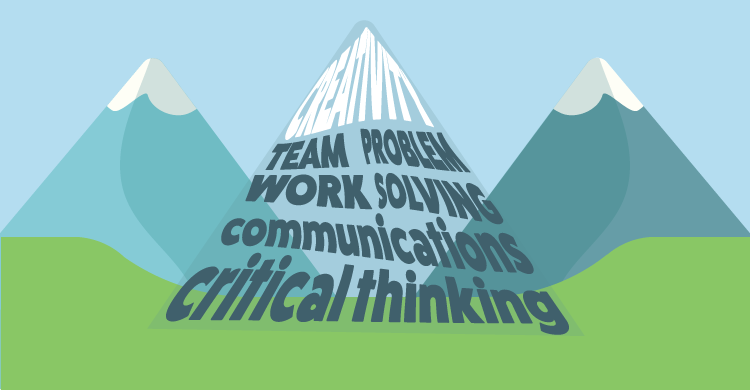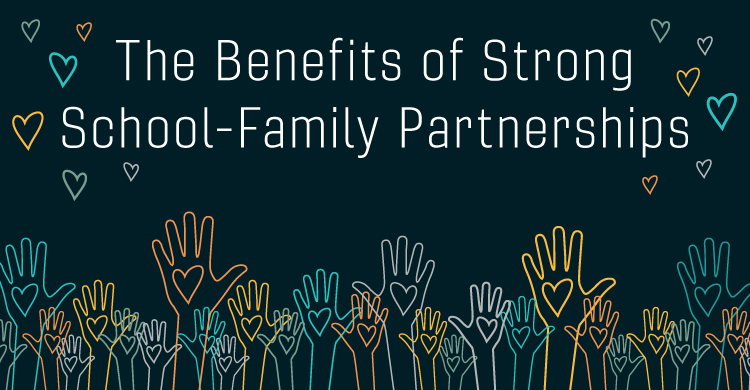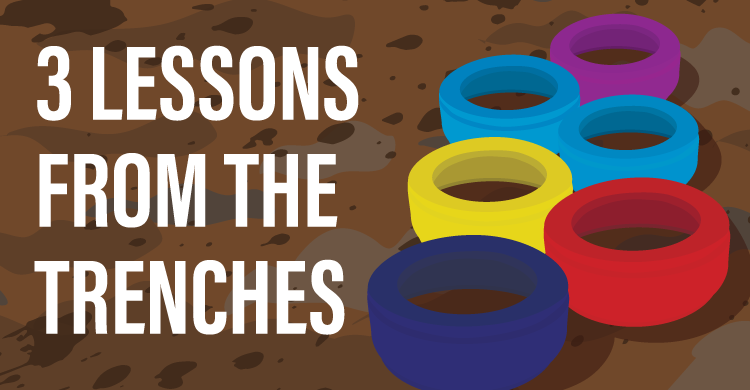(Note: This post is co-authored by Chris Weber and Nathan Lang, and guest authors Jason Anderson and Weston Kieschnick.)
Now, more than ever, serving all students means equipping them with the skills and attributes necessary to succeed in the world. The Economist Group (2014), for example, reports that the top-five skills that employers seek in potential candidates are (1) problem solving, (2) team-working, (3) communications, (4) critical thinking, and (5) creativity. These skills represent more than the lofty ambitions of the 4 Cs of the 21st century; they represent the reality of today’s societies and economies and must increasingly and immediately be heavily represented within classrooms and schools.
The four of us have served as classroom teachers, site administrators, and senior district leaders. We now serve schools for a large educational media organization, Houghton Mifflin Harcourt.
As school and district leaders, we enthusiastically embraced the notion that collaboration is key—silos are simply incompatible with progress, and high levels of learning for all are impossible for those who choose the path of isolation. Teachers must collaborate with teachers, both within their similar grade levels and courses, and vertically with adjacent grade spans and interdisciplinarily. General education and special education staffs must serve all students in innovative ways. Non-classroom teaching staff and classroom teaching staff must reject the “way we’ve always done things” mentalities. Administrators and teachers must collaborate vulnerably and embrace new roles and new approaches. District offices must humbly serve schools, providing guidance, allowing for focus, and leading the teaching and learning transformations. And finally, traditional publishing companies (and we work for the biggest and the best) must move beyond selling and serving as vendors to become partners in progress.
In the same way students cannot be successful without great teachers; great teachers cannot be successful without meaningful partners. This includes administrators, parents, teacher colleagues, and yes…“vendors.” Schools and districts must release their prejudices (we had them too, as school and district leaders), and seek to codevelop and coevolve with external organizations, all on behalf of crafting more engaging and contemporary learning environments for students.
Like so many educators, we changed our roles within the profession because we believed (perhaps naively) that we could make a broader positive impact on students and staffs. Despite the role change, we are still you. We are parents. We are teachers. We are coaches. We are devoted to kids in much the same way we were when we first became classroom teachers. We believe in kids, and we believe in the notion that the right tools in the hands of passionate and talented educators can produce meaningful results. That belief still drives us to pursue this most-important-of-all profession as we seek to transform challenges into opportunities.
A pursuit of a broader impact brought about this irony: Once educators assume leadership roles and leave the classroom, we lose touch.
Therein lies a challenge: How do site administrators, district administrators, and those who serve schools from outside traditional K-12 environments stay current and deeply connected to the needs and challenges of students, staffs, and schools?
The answer to this question lies in the collaboration space. Without meaningful partnerships, it is impossible for anyone in education to stay as connected as we need to be. Without it, an administrator can’t possibly stay truly connected to the ethos of a classroom teacher. In the same way, a classroom teacher is challenged almost daily to tap into the psyche of a building or district administrator. Similarly, we are challenged to stay 100 percent plugged into the needs of every stakeholder at all levels—classroom, school, district, state, and nation levels. That’s why collaborative partnerships are essential. Each subgroup possesses niche expertise that can bring value to the other. When that expertise is shared, within a trusting and focused environment, kids benefit.
We begin to imagine a productive, thriving, and collaborative community:
- Between schools and educational media organizations
- Between communities and schools
- Between administrators and teachers
- Between teachers and students
The group capital that exists between these partnerships would be more powerful than a runaway chain reaction. A runaway chain reaction describes the phenomenon that occurs when a single nuclear reaction causes subsequent nuclear reactions, leading to self-propagating releases of massive amounts of energy. A nuclear chain reaction releases several million times more energy per reaction than any one chemical reaction. When a tribe member shares or forwards a colleague’s personal experience or blog post, an educational chain reaction occurs. That one reaction inspires others to change direction, inspires another blog post, or provokes action.
Through innovative, nontraditional partnerships, we could collaboratively:
- Curate print and digital resources for students’ customized, differentiated, and personalized needs.
- Explore, practice, and reflect upon transformative pedagogies, strategies, and practice.
- Ensure that all technologically-related assets are robust enough to support the most innovative approaches to teaching and learning—infrastructure, hardware, and devices.
- Design systems of supplemental systems of supports that address the when, who, and what of interventions and enrichments.
In our new roles, success is not about closing a sale. Yes, we celebrate these successes, but that’s not what pushes and drives us. Success, to us, is how many teachers we have empowered and supported to create rich learning experiences for students. Success is how many students we have been able to impact throughout their learning journey. Success is not measured in sales. Success is measured in the number of students we can support in being the best versions of themselves.
[author_bio id=”77″]






